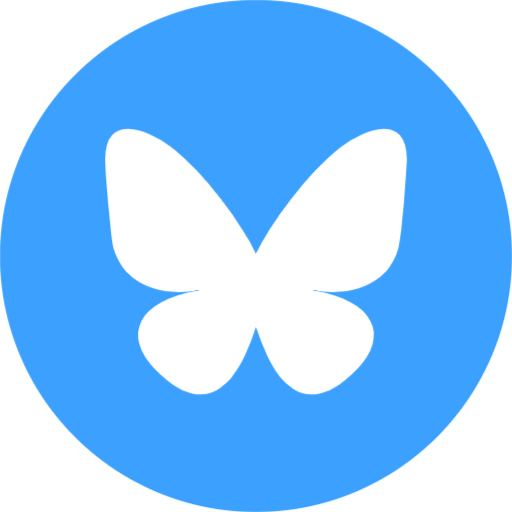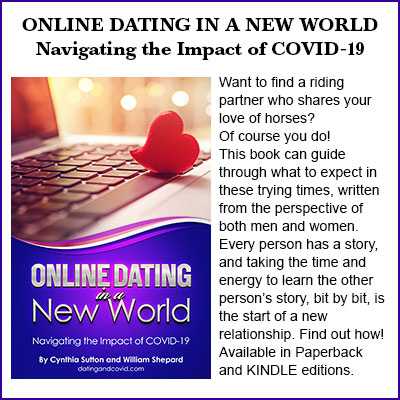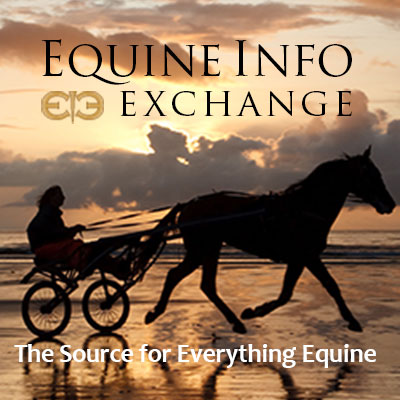Recreation & Lifestyle
Welcome to Recreation & Lifestyle, which includes leisure riding and other aspects of the equestrian lifestyle for you and your horse loving friends and family.
Looking for the perfect present? See the Gifts & Jewelry section. Redecorating? Find a Painting, Photograph or Sculpture in the Artwork section. Need to check out a movie or crawl up with a good book or magazine? See our Entertainment section where you will find and Books, Movies, Games, and Magazines. And don't forget about Fine Art in some specialty Museums that might surprise you.
Looking for love or a trail buddy? Riding Partners is the spot to seek other riders who share your passion. Find a place to ride with that special person in our Trail Riding section and if you need more time away, take a look at Vacations. Want to know about the next horse show or special event? Don’t miss it! Dates and locations are included in the Calendar of Events for Recreation & Lifestyle.
Do we need to add more? Please use the useful feedback link and let us know!
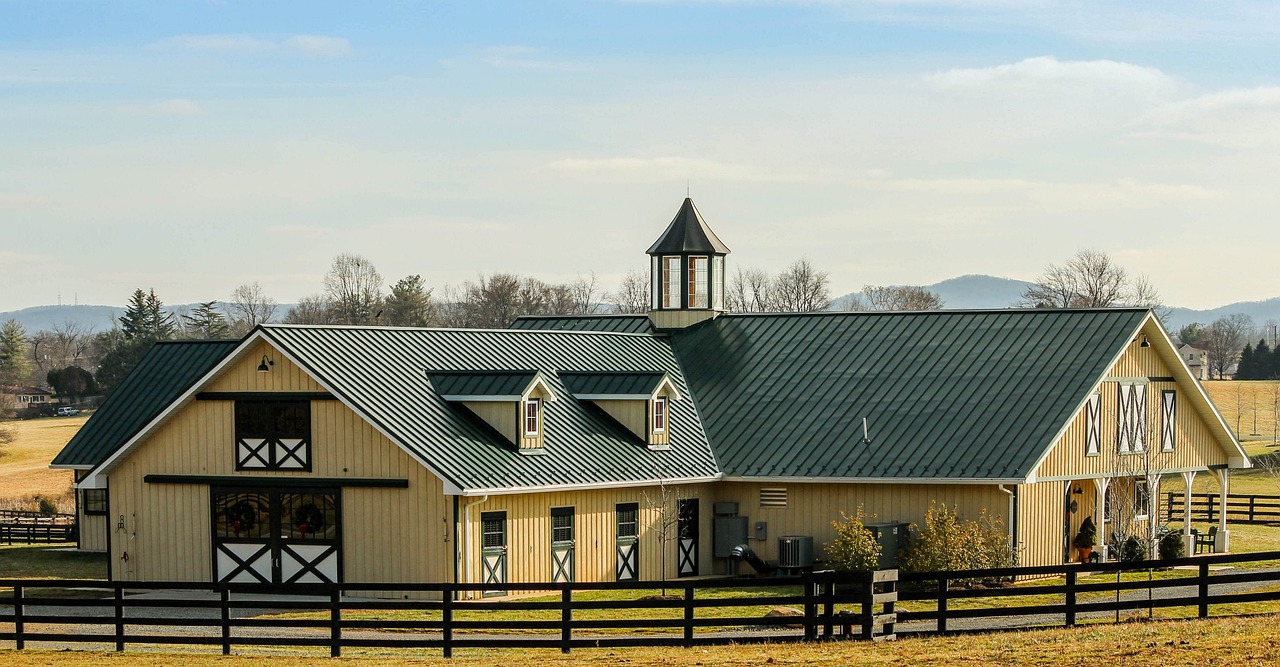
Purchasing a horse farm or an equestrian center can be a very exciting yet overwhelming venture. It is far more complex than buying a home since many factors need to be considered for the best care and safety for your horses. When looking at equestrian real estate, it is important to consider the following factors.
Land
The amount and quality of land is one of the most important factors to consider when buying equestrian real estate. You will need enough land to accommodate your horses, as well as any other buildings or facilities that you plan to have on the property. The land should also be suitable for horses, meaning that it should be well-drained and have good footing.
Facilities
The type and condition of the facilities on the property are also important to consider. Do you need a barn, stalls, wash racks, tack rooms, or any other facilities? Are the existing facilities in good condition?
Location
The location of the property is also important. Do you want to be close to other equestrian facilities, such as riding trails, showgrounds, or veterinary clinics? Do you want to be in a rural area or a more suburban or urban area?
Test the Water, Test the Soil
Good water is key to good health. Check if there is an ample water supply and find out if there are water sharing rights.
Horses are greatly impacted by the quality of land. When you test soil, look for things such as alkaline, acidity, and salt levels. You’ll also need to look for signs of bad pesticides or herbicides. Even if sprayed years ago, they can still impact the soil today. When horses are grazing, they take in bits of soil along with the grass. If there are not enough nutrients or if the soil has pesticides, your horses are going to suffer. Tell the laboratory that you’re raising horses, not food crops. Horses and crops need different nutrients to be their best. Land that is good for crops may not be good for your horses.
Budget
Equestrian real estate can be expensive, so it is important to set a realistic budget before you start shopping. Keep in mind that you will also need to factor in the cost of maintaining the property and caring for your horses.
Financial Commitment
Horses are expensive animals to keep. You'll need to factor in the cost of bedding and feed, farrier services, veterinary care, stabling or boarding fees, deworming, vaccinations, and other miscellaneous expenses. You may also choose to insure your horse which is an additional cost.
Time Commitment
Horses are social animals that require regular handling and attention. You'll need to spend time each day feeding, watering, cleaning their stall, grooming, and exercising them. Even if you board your horse at a stable, you'll still need to factor in travel time to and from the barn.
Finding Suitable Housing
Horses need a safe and secure place to live. You'll either need to have enough property to provide them with pasture and shelter, or you'll need to board them at a stable. Boarding fees can vary depending on the location and amenities offered. Here's a Boarding Checklist to help you in your search. Likewise, if you plan on having grooms or caretakers live on your property to look after your horses and farm, ensure that there is adequate staff housing available.
Know Your Neighbors
Owning a horse can be a challenging but rewarding experience. It's important to have a support system in place, such as a trainer, a farrier, a veterinarian, and other horse owners. These people can provide you with guidance, support, and friendship.
Get to know your neighbors. When you find that perfect piece of land, go introduce yourself. These are the people that know about the land, the weather, and what to do in emergencies. Find out what they do with their farmland, any problems they have, and let them know what you’re thinking of doing with your own potential property.
Keeping all of these in mind, owning a horse can be an incredibly fulfilling and rewarding relationship for many years, so treasure every moment!
Equestrian Real Estate in California
You can find more interesting stories in our section on Recreation & Lifestyle.
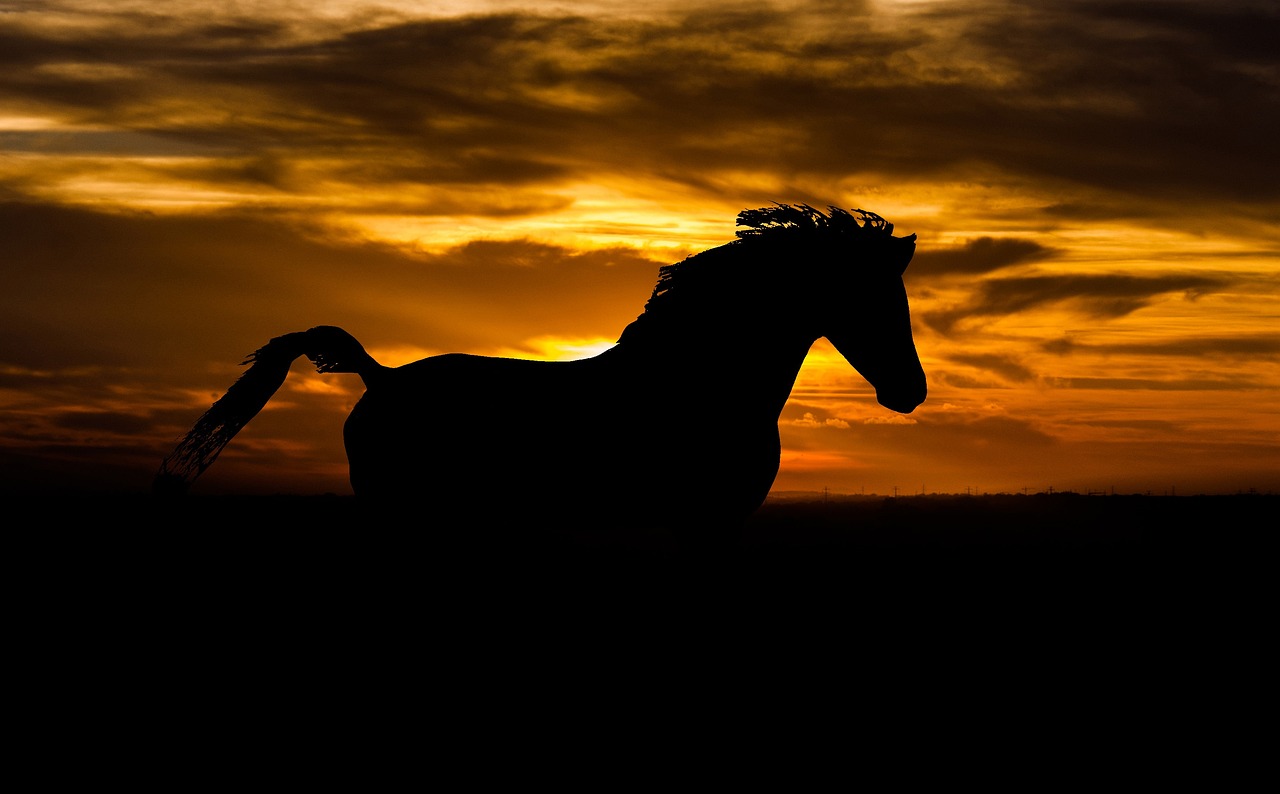
By the EIE Editorial Staff
Horses have earned their fame for a multitude of reasons, both for their contributions to human history and for their inherent qualities that have captured our imagination. Here's a list of our most memorable and famous horses.
1. Black Beauty: This fictional horse is the star of the beloved children's novel of the same name by Anna Sewell. The story tells the tale of a black stallion who is mistreated by various owners but ultimately finds a happy ending. Black Beauty's story is a powerful indictment of cruelty to animals and remains a popular choice for young readers.
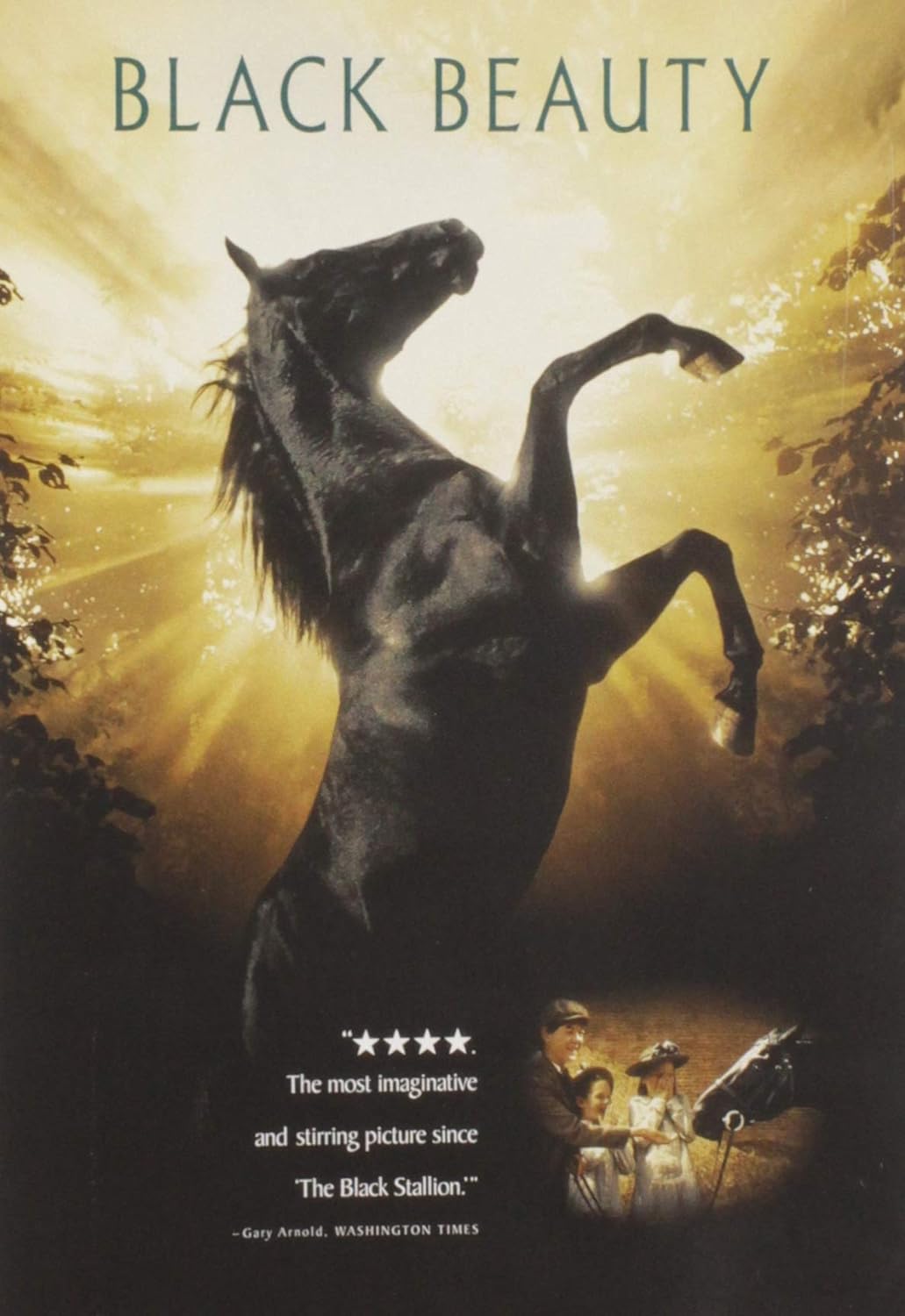
Black Beauty (1994)
Buy Now on AMAZON
VHS Tape | DVD | Blu-Ray | Prime Video
The fates of horses, and the people who own and command them, are revealed as Black Beauty narrates the circle of his life. Director: Caroline Thompson, Writers: Anna Sewell (novel), Caroline Thompson (screenplay), Stars: Sean Bean, David Thewlis, Docs Keepin Time
Black Beauty by Anna Sewell
Buy Now on Amazon
Paperback | Hardcover
2. The Black: “The Black” is the name of the stunning fictional Arabian stallion from the book series from Walter Farley which was later made into a beautifully filmed masterpiece in 1979. In the movie, this powerful black stallion forms a unique bond with a young boy, Alec Ramsay, when they are both shipwrecked on a deserted island. The boy later races The Black against the best racehorses in the country.
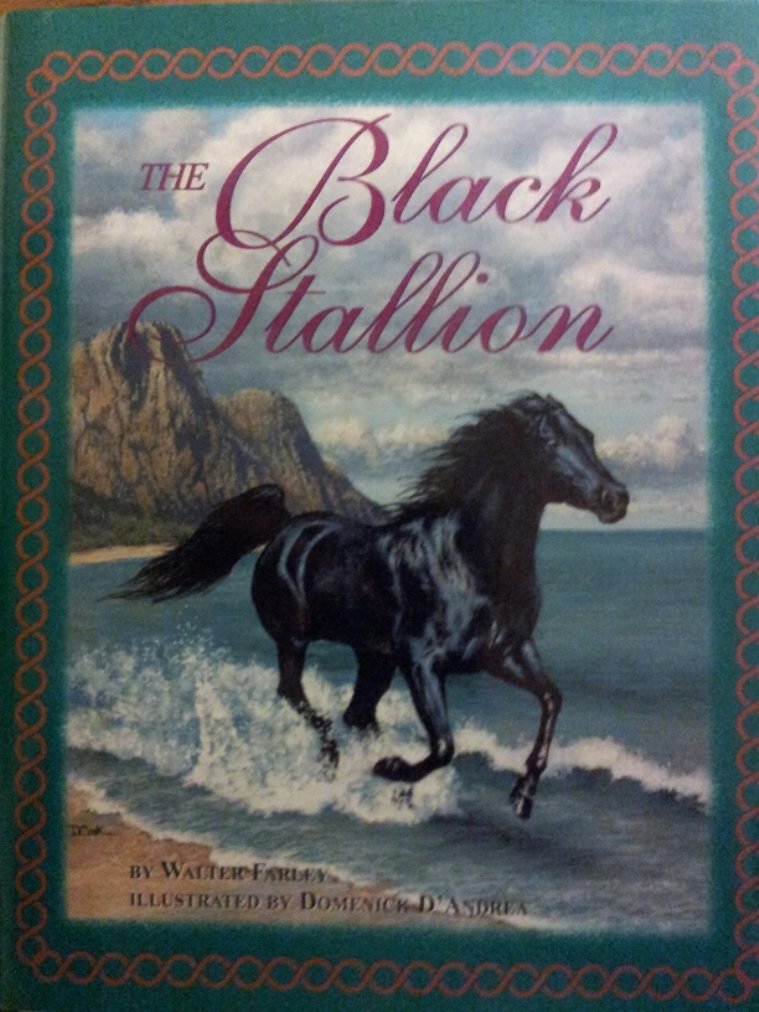
The Black Stallion by Walter Farley</br > Buy Now on Amazon
Paperback | Hardcover
The Black Stallion (1979)
BUY NOW on AMAZON
VHS Tape | DVD | Blu-Ray | Prime Video
While traveling with his father, young Alec becomes fascinated by a mysterious Arabian stallion that is brought on board and stabled in the ship he is sailing on. Director: Carroll Ballard, Writers: Melissa Mathison (screenplay), Jeanne Rosenberg (screenplay), Stars: Kelly Reno, Mickey Rooney, Teri Garr
3. Man o' War: Nicknamed "Big Red," Man o' War was another champion racehorse who dominated the early 20th century and is widely regarded as one of the greatest racehorses of all time. He won 20 of his 21 starts, established seven track records for speed over various distances, and raced at odds as short as 1–100. He died on November 1, 1947, at age 30 after an apparent heart attack. He was so popular that his funeral was broadcast live on NBC Radio.
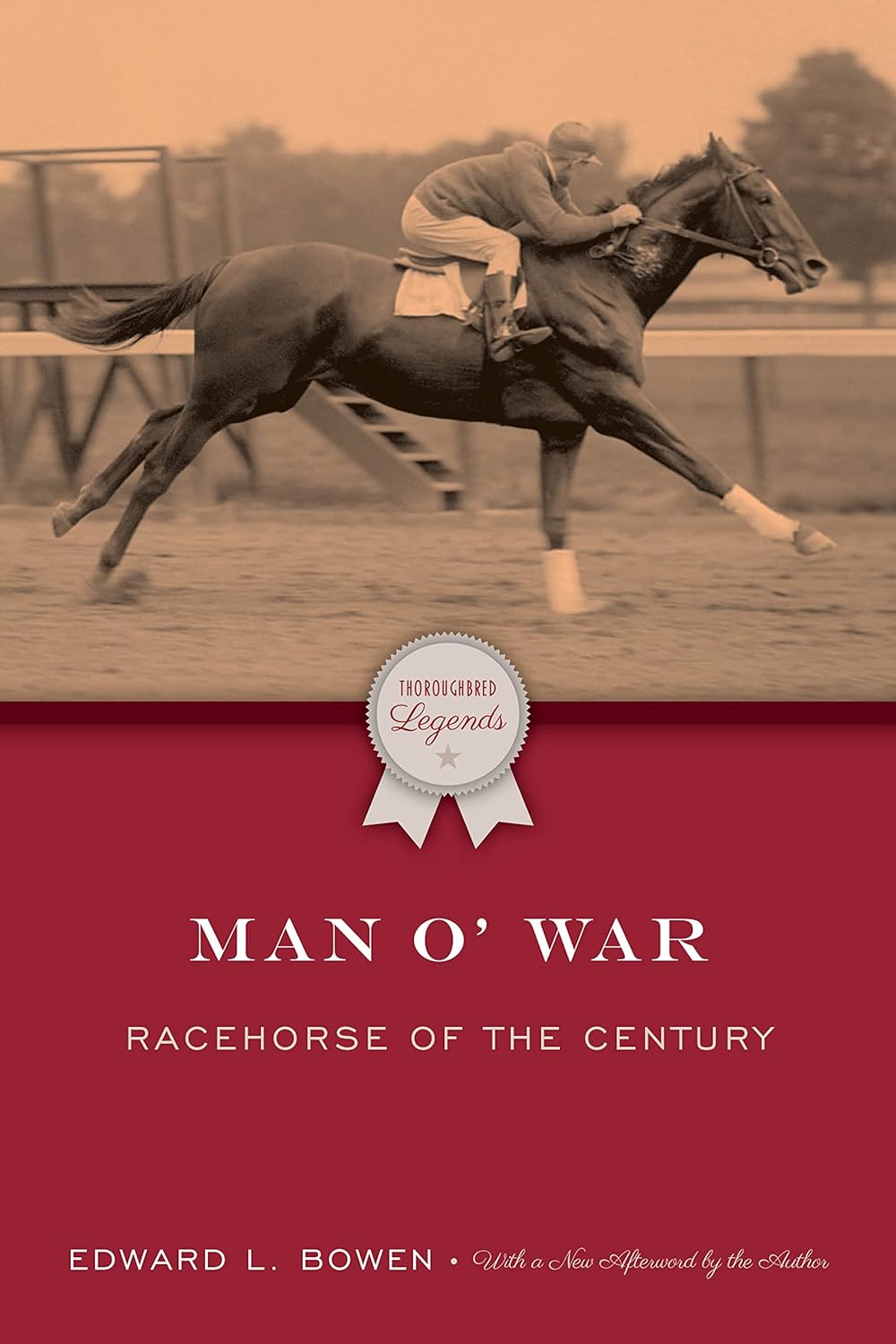
Man o' War (Thoroughbred Legends) by Edward Bowen
Buy Now on Amazon
Hardcover | Paperback | Kindle
4. Mister Ed: The talking palomino horse of the 1960s sitcom was "Mister Ed." The talking palomino horse, Mr. Ed, was played by a talented horse named Bamboo Harvester. His voice was provided by actor Allan Lane. The show centered around Wilbur Post, the owner (played by Alan Young), who was the only one who could understand Mr. Ed's witty and often sarcastic remarks.
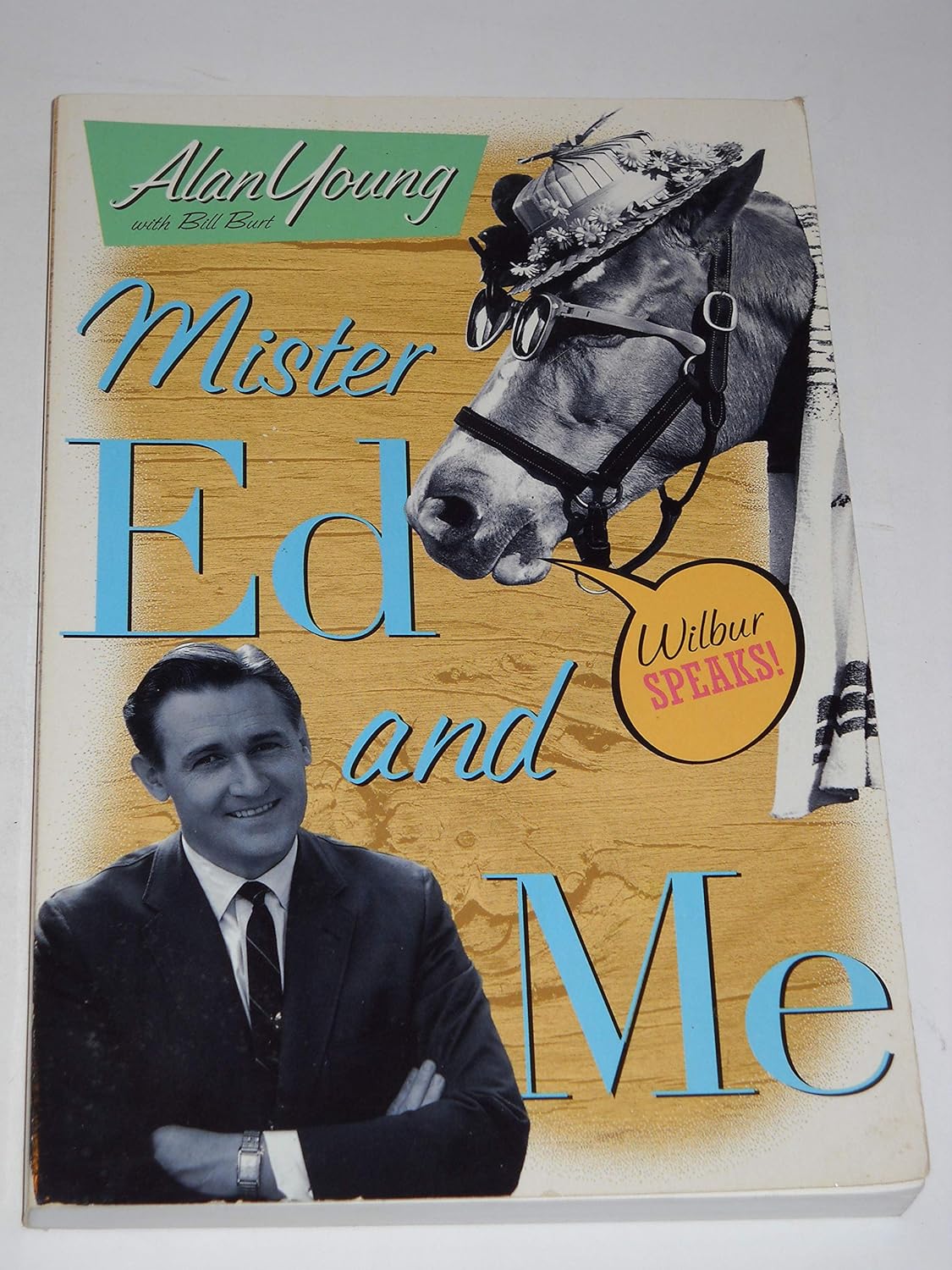
Mister Ed and Me by Alan Young
Buy Now on Amazon
Paperback
5. Misty of Chincoteague: Misty was a fictional horse from the children's novel “Misty of Chincoteague” by Marguerite Henry. The book is inspired by the real-life Chincoteague Pony Swim, a tradition where Chincoteague Island ponies are rounded up and swim across a channel to Assateague Island. In the story, two siblings, Paul and Maureen, befriend a wild mare named Phantom and her foal, Misty.
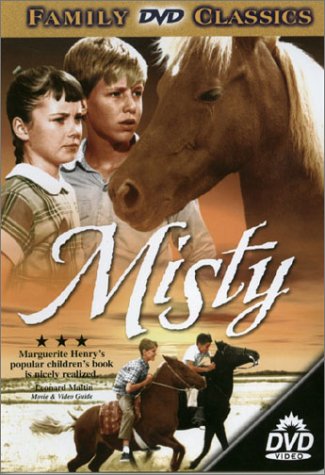
Misty of Cincoteague
Buy Now on Amazon
Paperback | DVD | Prime video
6. Phar Lap: An Australian racing champion, Phar Lap wasn't just fast; he had a powerful physique. Standing at 17 hands tall with a massive heart (later discovered to be unusually large), his physical attributes contributed to his racing prowess. Phar Lap wasn't just a winner; he was dominant. He won a staggering 37 races out of 51 starts in the 1920s and early 1930s, often beating competitors by significant lengths. His versatility was impressive too, excelling in both long-distance and sprint races. Coinciding with the Great Depression, Phar Lap's victories provided a much-needed morale boost for Australians. His death at a young age from alleged poisoning remains a mystery.
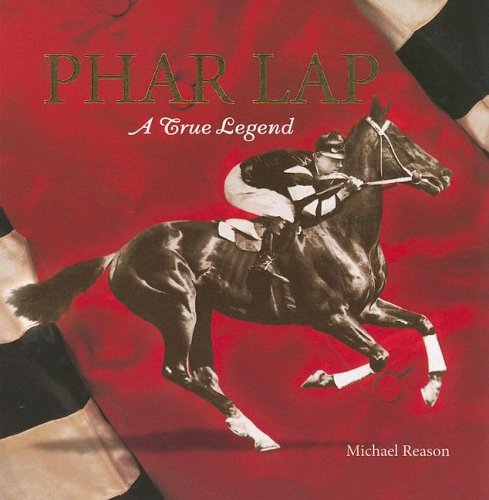
Phar Lap: A True Legend by Michael Reason
Buy Now on Amazon
Kindle | Paperback
Phar Lap (1983)
Buy Now on AMAZON
VHS Tape | DVD
7. Seabiscuit: The undersized racehorse who became a national sensation during the Great Depression. Seabiscuit wasn't a horse owned by the elite. His owner, Charles Howard, wasn't a wealthy man either. Their success story resonated with ordinary people who felt overlooked or underestimated. The bond between Seabiscuit and his jockey, George Woolf, was another captivating aspect of the story. Woolf himself had overcome injuries and setbacks, further mirroring the spirit of resilience. Their teamwork became a source of inspiration. The book by Laura Hillenbrand entitled “Seabiscuit: An American Legend” tells the story of Seabiscuit's transformation from a struggling racehorse to a champion, beating triple crown winner War Admiral in a 1938 match race.
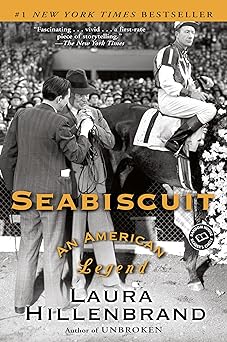
Seabiscuit: An American Legend
BUY NOW on Amazon
Hardcover | | Kindle | Audiobook
Seabiscuit (2003)
BUY NOW on AMAZON
VHS Tape | DVD | Blu-Ray | Prime Video
True story of the undersized Depression-era racehorse whose victories lifted not only the spirits of the team behind it but also those of their nation.
Director: Gary Ross, Writers: Laura Hillenbrand (book), Gary Ross (screenplay), Stars: Tobey Maguire, Jeff Bridges, Elizabeth Banks |
8. Secretariat: Another “Big Red!” This chestnut thoroughbred won the 1973 Triple Crown in which his record-breaking times for the Kentucky Derby, Preakness Stakes, and Belmont Stakes still stand today. Race caller Chic Anderson announced Secretariat was moving like a “tremendous machine” on the way to winning the Triple Crown and Belmont Stakes by a remarkable 31 lengths. Upon his death, it was discovered his heart was twice the size of a normal horse. Many consider Secretariat to be the greatest racehorse of all time.
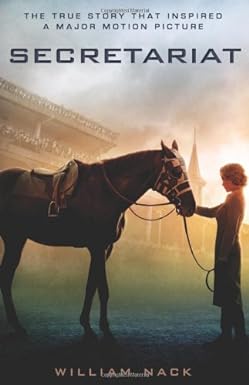
Secretariat by William Nack
BUY NOW on Amazon
Paperback | Audiobook
William Nack (Author). “Secretariat is an elegantly crafted, exhilarating tale of speed and power, grace and greatness, told with such immediacy that the reader is lost in the rush of horses and the clatter and ring of the grandstand.” —Laura Hillenbrand, bestselling author of Seabiscuit. Updated with a new preface by the author. In 1973, Secretariat, the greatest champion in horse-racing history, won the Triple Crown. The only horse to ever grace the covers of Time, Newsweek, and Sports Illustrated in the same week, he also still holds the record for the fastest times in both the Kentucky Derby and the Belmont Stakes. Paperback: 480 pages Publisher: Hyperion; Reissue edition (August 31, 2010) KINDLE EDITION Available
Secretariat (2010)
BUY NOW on AMAZON
Blu-Ray | Prime Video
Penny Chenery Tweedy and colleagues guide her long-shot but precocious stallion to set, in 1973, the unbeaten record for winning the Triple Crown. Director: Randall Wallace, Writers: Mike Rich, William Nack (book), Stars: Diane Lane, John Malkovich, Margo Martindale
9. Silver: The Lone Ranger's loyal white steed, Silver is one of the most recognizable horses in American pop culture. He was a constant companion to the masked hero and helped him fight for justice in the Wild West. Actually, Silver wasn't actually a single horse! While the character of Silver is always a white stallion, multiple horses have portrayed him in the television show. The most famous Silver was likely played by two different horses. The first horse's real name was White Cloud, and the second was named Tarzan's White Banner, later renamed Hi-Yo Silver (after the show's famous catchphrase).
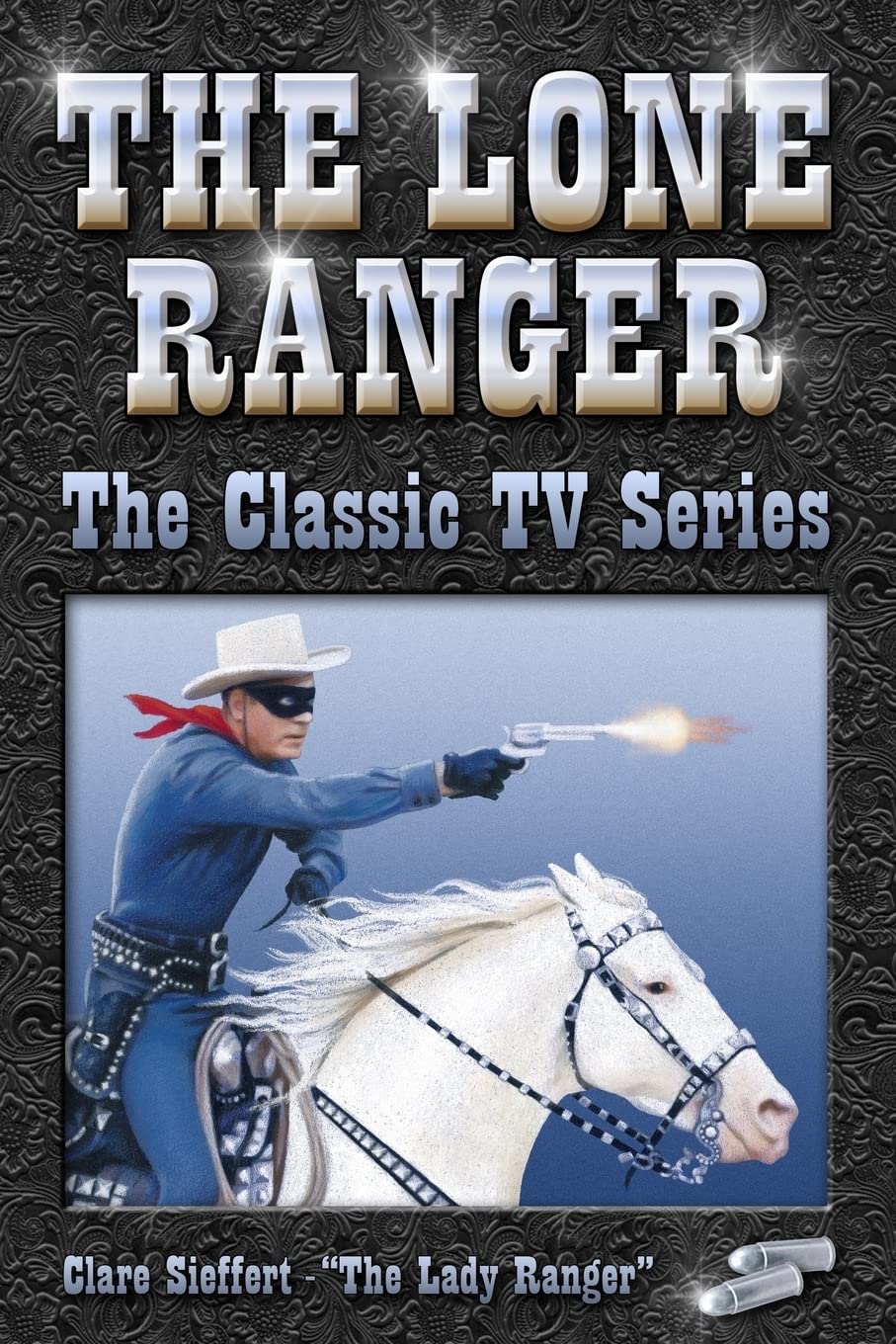
The Lone Ranger (The Classic TV Series)
Buy Now on Amazon
Paperback | Kindle
10. Trigger: Roy Rogers' golden palomino Trigger was another famous television horse. He appeared in numerous films and TV shows alongside Roy Rogers and was known for his gentle temperament and athletic ability. Trigger’s original name was Golden Cloud. Reportedly after riding the horse just 100 yards, Roy never looked at another, and purchased Golden Cloud on a time payment plan for the amazing sum of $2,500. As Roy recalled, "He would turn on a dime and he'd give you 9 cents change." We thought it was an ecumenical opportunity to see Trigger prior to selling at Christie’s in New York City for the amount of $266,500.
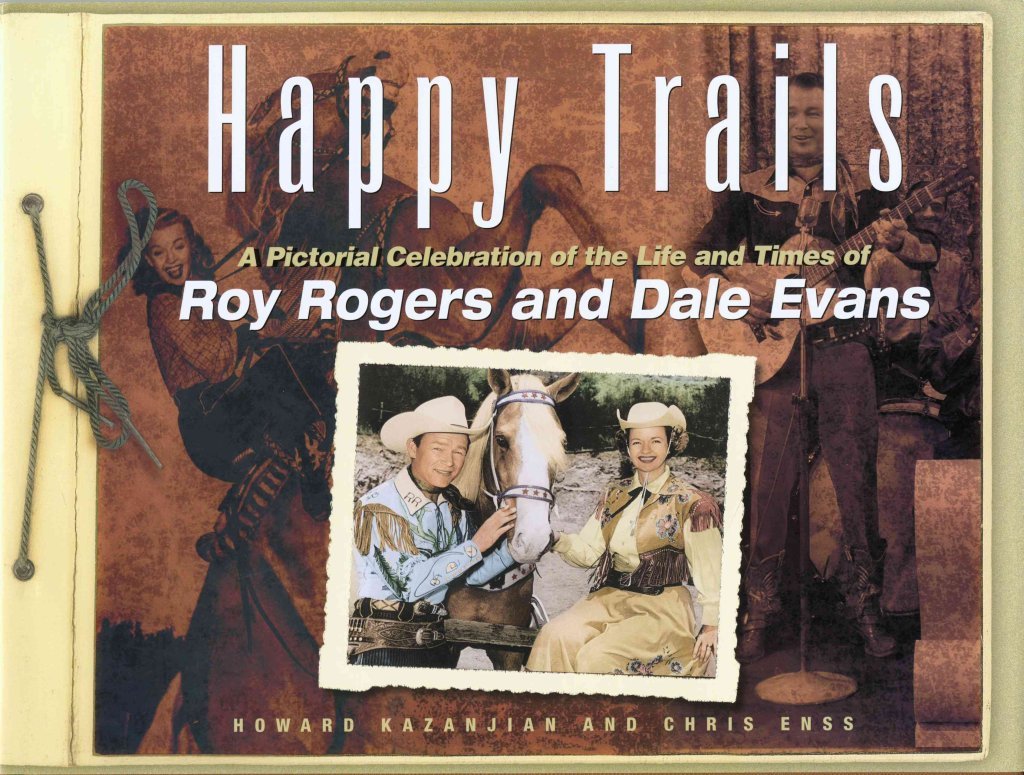 Happy Trails: A Pictorial Celebration of the Life and Times of Roy Rogers and Dale Evans
Happy Trails: A Pictorial Celebration of the Life and Times of Roy Rogers and Dale Evans
BUY NOW on AMAZON
Paperback | Hardcover
Which one is your favorite? Did we miss any? Let us know! Send us your article ideas at info@equineinfoexchange.com. We look forward to hearing from you!
You can find more interesting stories in our section on Recreation & Lifestyle.
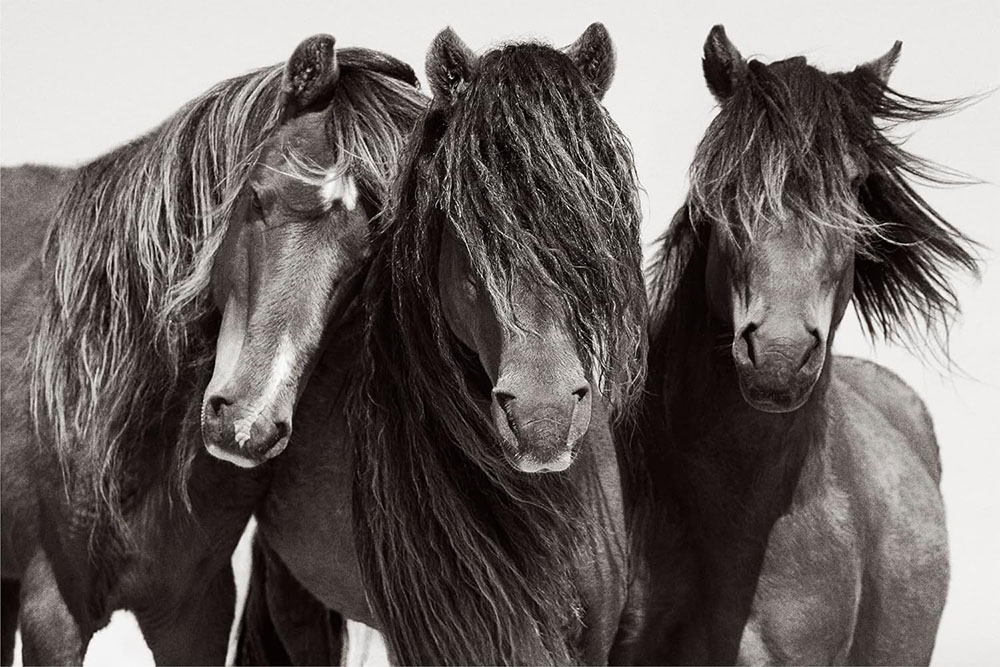
100 Images | 10+ Years | 5 Countries | 4 Continents
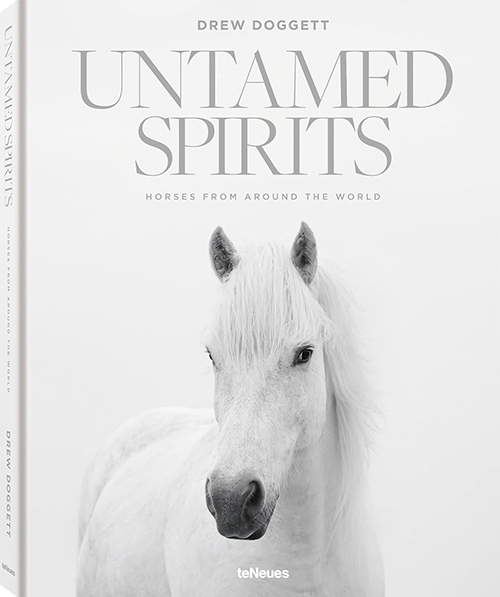
Renowned photographer Drew Doggett releases his latest book of photography featuring unique and storied horses from around the world, captured with unprecedented access through a fashion-inspired lens.
(Charleston, SC—March 19, 2024) The studio of award-winning fine art photographer Drew Doggett is thrilled to
announce the highly anticipated release of his newest book,
The images and text within these pages invite you on a visual journey visiting some of the most unique and storied horses from across the globe, including the Icelandic horses beneath waterfalls, rescue horses photographed underwater in the West Indies, the elite horses competing in Wellington, Florida each year, the wild and free horses of Sable Island, and the ancient, bold, and beautiful, all-white Camargue horses in the South of France. Within its pages, the artist uncovers the currents evident in horses no matter where they roam; from their strength to their innate sense of character, by recognizing their wild beauty and allure in all shapes and forms.
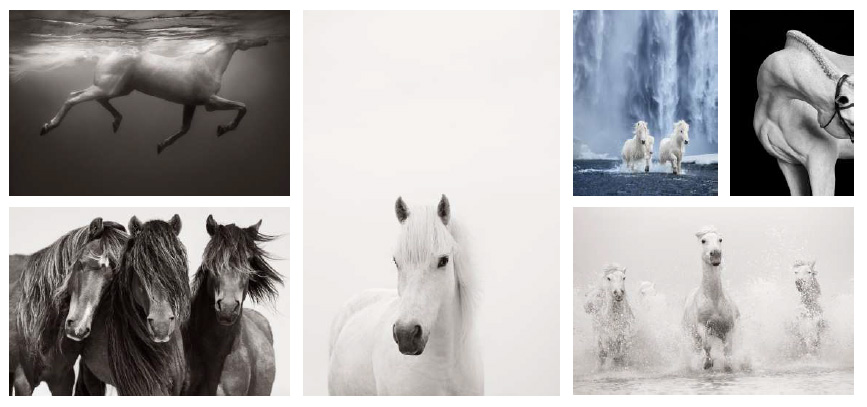
The collection of images in Untamed Spirits, which bear the artist’s signature fashion-inspired style and attention to detail, further cement the horse’s enduring appeal as companions to man and symbols of strength and fortitude. The book also contains the backgrounds of each photographic series and breed, as well as artist statements reflecting on the unique artistic choices of each series. By the end of this book, readers will gain an understanding and appreciation of horses around the world while also discovering what makes them an enduring part of our global culture.
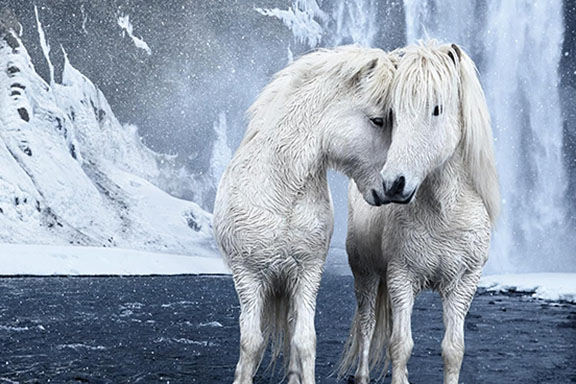
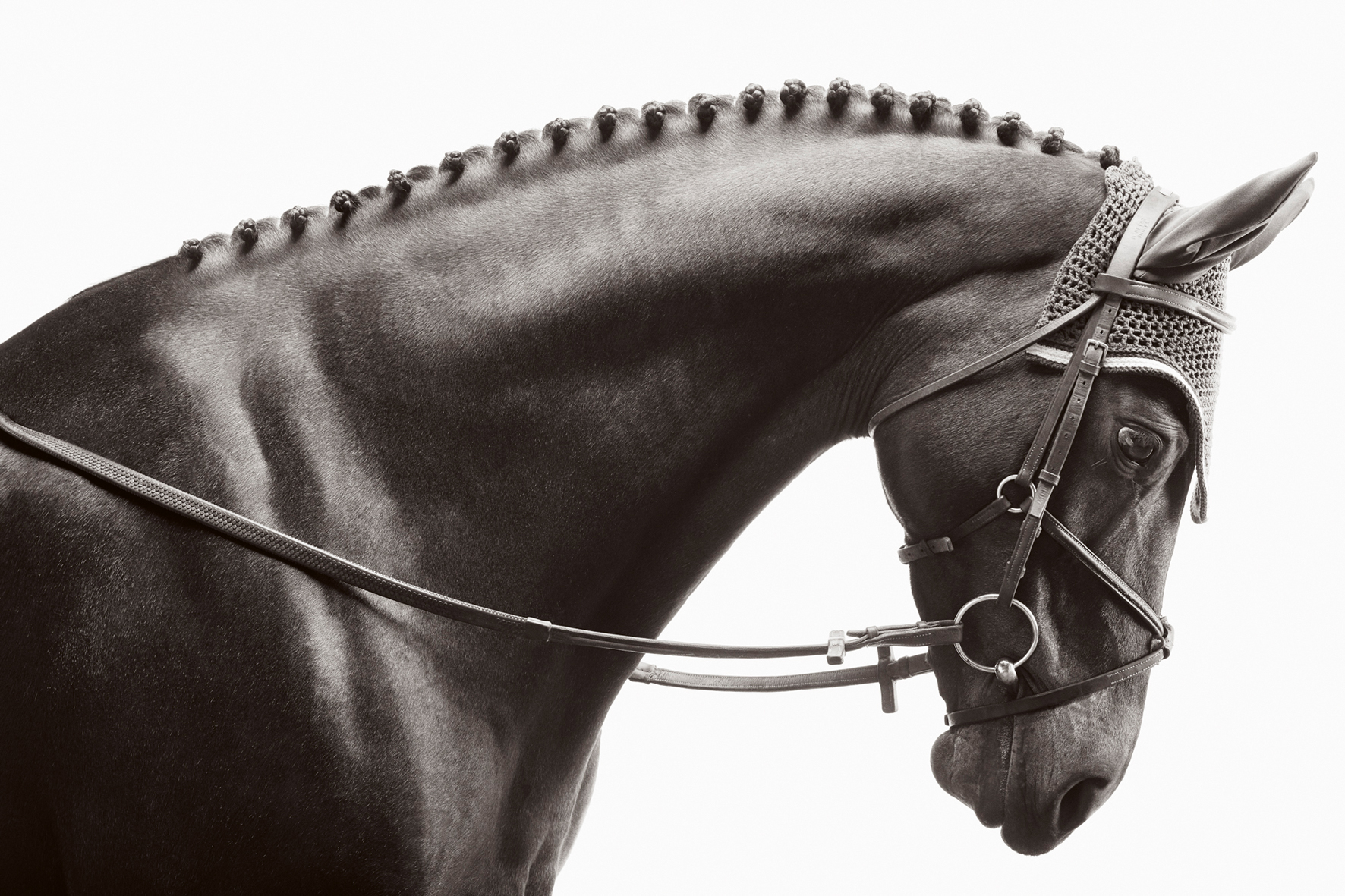
About the Artist
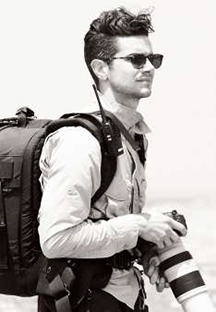
Drew Doggett is an award-winning photographer and director whose work tells extraordinary stories of diverse cultures, communities, and wildlife through a fashion-inspired lens. The works featured in Untamed Spirits: Horses from Around the World are part of Drew's photography series captured over the last decade, celebrating horses around the world. His photographic work can be found in private and public collections globally including the Smithsonian African Art Museum (DC) and has been featured in many publications such as Conde Nast Traveler, Architectural Digest, Forbes, and The Daily Mail. He currently serves as an ambassador for Re:wild, a conservation organization founded by Leonardo DiCaprio and Global Wildlife Conservation.
Through a fashion-inspired lens, photographer & filmmaker Drew Doggett tells extraordinary stories of diverse cultures, animals, and communities. From remote tribes in the farthest reaches of the Kenyan desert to the largest tusked elephants left on Earth, Drew is relentless in his pursuit of sharing the miraculous beauty of our natural world through his fine art photography series and short films. Drew's photography can be found globally in private and public collections, notably the Smithsonian African Art Museum (DC) and the Four Seasons (HI). He has received over 130 awards and honors for his images and films, including being named 2023 Nature Photographer of the Year at the ND Awards. Drew’s artwork has been featured in many publications, such as Conde Nast Traveler, Architectural Digest, Forbes, Bloomberg, Fortune, The Daily Mail, and Outside Magazine.
To see the entirety of Drew's fine art print series, including his equestrian work, and to watch the accompanying short films, visit www.drewdoggett.com

Untamed Spirits: Horses From Around the World
BUY NOW on Amazon
Hardcover - released July 2, 2024.
You can find more interesting stories in our section on Recreation & Lifestyle. Be sure to check out our Curated Amazon Store.
We are saddened to see that Golden Gate Fields closed this past weekend. We had great memories there, especially the time we met the late equine photographer Julie Albright who took us to the backstretch to meet her horse Awesome Gem whom she owned in partnership with West Point Thoroughbreds. We especially loved the area which included a tribute to the champion sprinter Lost in the Fog who is buried at the track he called home.
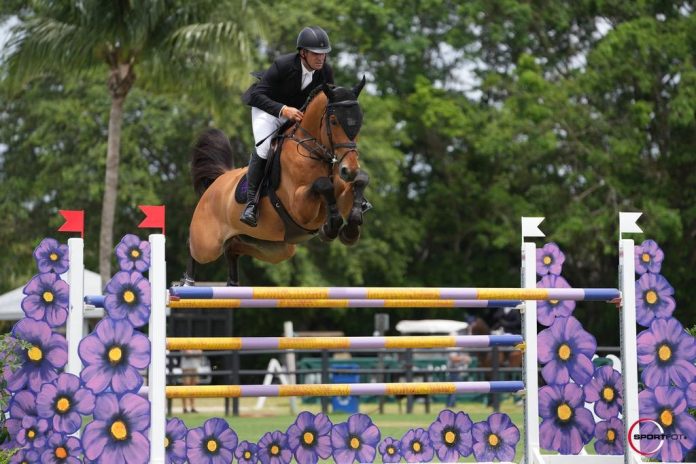
by Allyson Coluccio
An expert in importing, Allyson Coluccio provides her take on what to look out for before buying a horse from across the pond
I have been importing horses since the early 90’s. Well, I suppose it actually started with the ponies! I started with importing British Riding Ponies from England. At the time, Warmbloods were just becoming more popular, so in 1995, I began importing horses as well.
To date, I’ve imported hundreds of horses from Europe to the United States, primarily focusing on horses from Holland, Belgium, and Germany. While at this point I’m a seasoned professional in the importing business, I still manage to learn new things everyday—and I hope to share that sentiment with others that are interested in importing.
While finding the horse that fits your needs for the ring you wish to compete in is important, I encourage buyers to seek out the most amateur-friendly horse you can find. While these do exist in America, I find that the horses in Europe with the best brains are actually less expensive than here.
In Europe, they value a little more blood than the average person in America. While they have caught on to the idea of “hunter-izing,” you may be able to get the slow and steady horse for a purchase price of $40,000 that would otherwise cost six figures in the United States.
Outside of the potential savings you could get from this type, the obvious reason to buy the best-brained horse is for safety and assurance in the ring and on the ground; that quieter horse means less prep, which means less wear and tear on the horse.
I currently have a horse that I think is the best horse we have ever had. It doesn’t matter if he hasn’t been turned out or ridden consistently. Every day that he comes out, I am just as likely to put an eight-year-old on him as I am an eighty-five-year old. That’s what makes him great!
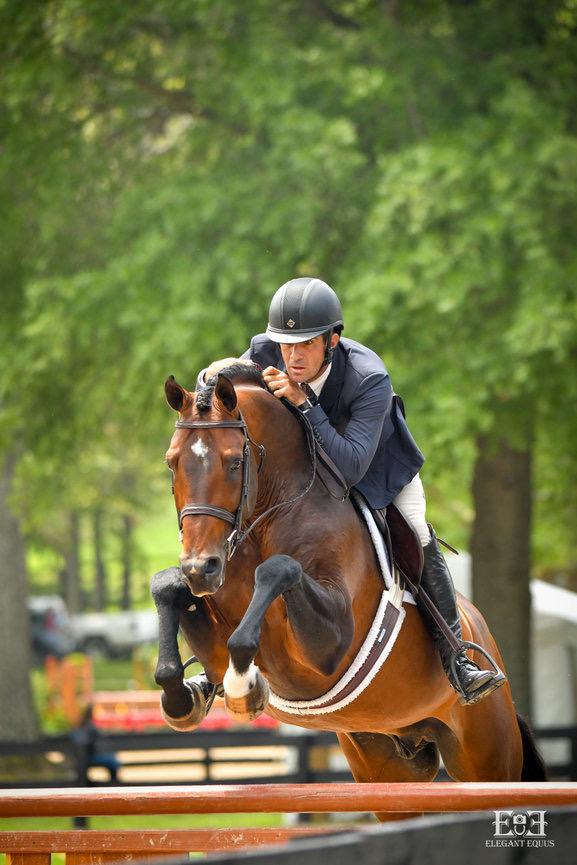
A Common Trap
As an expert, even I have been fooled by the rumored “X-ray swap.” I recently purchased a horse from someone that I have bought from before, and sure enough, the X-rays I was given were not the ones that belonged to the horse. Luckily, they were mediocre X-rays exchanged for other mediocre X-rays, but it’s important to make sure you do everything possible to ensure this doesn’t happen to you!
Even if a seller has X-rays for a horse, be sure to pull your own and confirm that the name, microchip number, or other identifying qualities match with the horse that you are purchasing.
On the subject of X-rays, I’d like to stress the importance of sometimes looking beyond the X-rays. As a whole, what comes up in films is very rarely what becomes an injury to a horse. More horses get soft tissue injuries due to the excessive work we do in America. That’s not something that has anything to do with an X-ray; that’s a people problem!
If you’re on a budget, I highly recommend you consider the horse with a blemish. Consult your vet to see how it may impact them long term. Who knows, you may end up with the WEF hack winner at a fraction of the price as it would be in America.
Importing can be a super fun way to find your next partner. Just make sure you’re smart about the buying process and find the one that is the best fit for you.
This article originally appeared on The Plaid Horse and is published here with permission. All photos courtesy of The Plaid Horse.
There are many more interesting articles in our section on Recreation & Lifestyle.
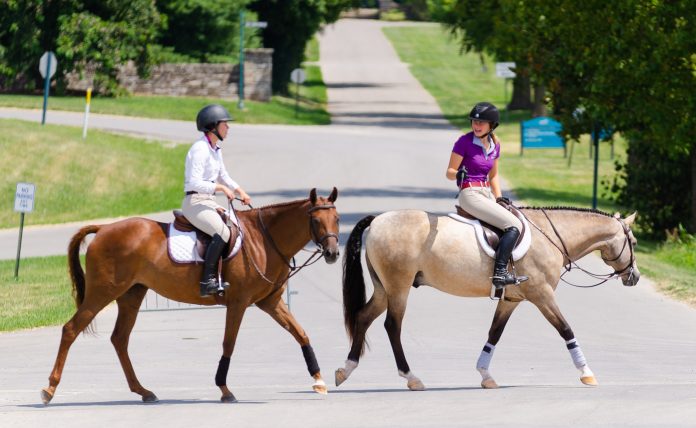
A Colorado Town Rises Up To Make Streets Safer For Equestrians
by Lee Foster
On December 2nd, careless driving turned deadly in a quiet Colorado equestrian neighborhood. A local schoolteacher and her horse were on their way to ride the trails at a park near their barn when they stopped at a stop sign, looked both ways, and proceeded to cross an intersection they had ridden through hundreds of times over their years of riding the neighborhood together.
Halfway through the intersection, the rider saw a car approaching the four-way stop much too fast. She screamed for the driver to stop as she urged her horse out of the car’s path. The driver, she would explain to the local news later, did not even look up from his lap.
He smashed into her horse, shattering his front legs on impact and sending her flying onto the hood and windshield of the car. When law enforcement arrived on scene, the shaken rider said she was unhurt and stayed with her companion until he was euthanized in the street fifteen minutes after the crash.
The driver was sent home with a ticket for running a stop sign.
A Tight-Knit Community
Nestled between the foothills and the plains, the laid-back town of Arvada, Colorado might not seem like a hotbed of equestrian activity – blocks of condominiums and strip malls have largely replaced the historic barns and pastures that once defined its landscape. But the equestrian community hasn’t gone anywhere.
Instead, it’s adapted to the shut-down boarding barns and increased housing development. Town-broke pleasure horses can be found in drive-thrus and at tavern hitching racks, while A Circuit champions go about their workouts alongside youth drill team and gymkhana horses, tucked behind privacy fences and long driveways. Keep your eyes peeled and you might even spy a field hunter conditioning in the grass strips along the parkway.
As the traditional infrastructure for horsekeeping disappears from the area, horse folk of all backgrounds have become increasingly resourceful and reliant on community resources. People board in friends’ pastures and ride in dilapidated public arenas where the footing quality depends on neighborhood organizers.
Unofficial routes through neighborhoods are established and negotiated with neighbors in order to access riding areas. Sometimes, conditioning is just done by walking around the block. As jokes about invading local golf courses become less tongue-in-cheek, horse owners have come to realize that self-reliance in the local horse industry is becoming a thing of the past.
Tragedy Strikes Too Close to Home
When Griffin the off-track Thoroughbred was struck by a car, the outcry was immediate and vast. The collision occurred on a busy residential street near the school where the rider teaches, and dozens bore witness to the tragedy as the rider’s worst nightmare played out before her eyes. Within hours, news of the crash had spread from the northern reaches of Colorado to the remote communities in the Rocky Mountains.
The local equestrians’ anger and grief were palpable, and cries for law enforcement to do more to punish the driver rose up all over social media. Soon, a post was circulating on Facebook with instructions for how to write to Colorado State Patrol as well as the state congresswomen representing the district where Griffin died.
Dozens of people raised their voices and spoke up on behalf of the crash victim and her horse, demanding a safer city and a safer county for equestrians as the area becomes more urbanized. People contacted the media, and the outrage grew as two TV stations aired stories about the devastating wreck.
From Social Media Rage Comes Real Life Hope for Change
Within days of the launch of the email campaign to the state congresswomen, the district’s state representative reached out by phone to one of the organizers, expressing her heartbreak at the senseless loss and her firm resolve to help bring change. At the same time, the scheduled monthly meeting of the Arvada Area Horsemen’s Association was opened to the aggrieved equestrian public.
The meeting’s organizers scrapped the original agenda and put together a PowerPoint presentation on how the local horsemen’s associations and horse councils are already working toward a horse-friendly development plan for the county.
Thanks to a grassroots Facebook campaign that reached thousands without boosting a single post, the December 11th meeting’s attendance was standing room only with overflow tuning in via Zoom.
Over two hundred equestrians, representing every corner of the state, turned out to discuss positive changes that need to be made in the community. The state congressional representative was there with her six month old baby. Accompanying her was a county commissioner as well as a representative from the county planning and zoning commission.
Over the course of two hours, the gathered crowd discussed an equestrian-friendly master plan for the county’s infrastructure; statewide legislation to protect equestrians on public roadways; and steps individual equestrians can take to protect themselves when hacking out on the street. The overall takeaway from the meeting was that equestrians, when organized, are a powerful force for community change.
The main obstacle between equestrians and a safe community is the difficulty of organization and community participation in local government. Fortunately for the Arvada community, the outcry surrounding Griffin’s death has united equestrians around a common goal of safer infrastructure and enhanced legal protections for horses on the road.
A Fight for Change is Just Beginning
Many equestrians are aware of local horsemen’s associations and horse councils, which are typically nonprofit organizations geared toward providing group riding opportunities as well as giving the equestrian community a voice at the political table. The Arvada meeting boasted representatives from the Colorado Horse Council, Community Equestrian Arvada, the Arvada Area Horsemen’s Association, and the Jefferson County Horse Council.
Attendees were urged to join at least one of these organizations and keep the organizational momentum going. Changing laws and infrastructure policies is a noble goal that requires a lot of dedicated and at times tedious work on behalf of the citizens who want that change.
The need for substantial fundraising was also brought up, since infrastructural changes to make the community safer for horses require a significant amount of professional services just to research as well as permits, materials, and labor in order to implement them.
The prospect of raising enough money to buy a going grand prix horse may be daunting to some in the local community, but the reality is that the horse community is well-connected and generally affluent compared to other communities who have successfully enacted change in their towns and counties.
As the Arvada community processes its shock and grief over the unconscionable loss of our friend’s equine partner, community members are taking comfort and inspiration from the messages relayed at the December 11th town hall meeting. Even better, they are mobilizing under the banners of their local horsemen’s associations to bring about crucial protections for equestrians in a rapidly urbanizing neighborhood.
Although the #JusticeForGriffin outcry is centered in Colorado, riders within the state have expressed hope that their efforts will be seen and mirrored throughout the nation as equestrians strive to preserve their way of life in the modern world.
Lee Foster is a lifelong equestrian hailing from rural Colorado. Raised by a rodeo cowboy in a Pony Club family, he has a soft spot for quirky grade horses and off-track Thoroughbreds with a certain gleam in their eye. When he is not cleaning his tack for the hunt or malingering in the local consignment shop, Lee can generally be found hacking around town or teaching lower-level dressage to local eager youths.
This article originally appeared on The Plaid Horse and is published here with permission.
There are many more interesting articles in our section on Recreation & Lifestyle.
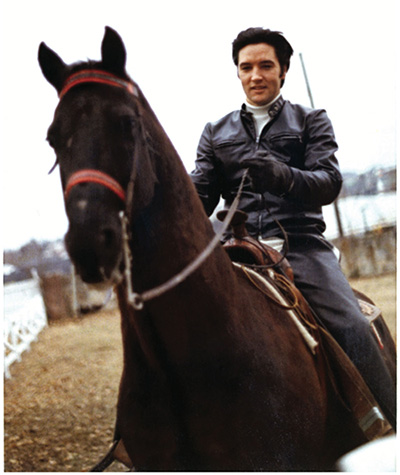
By the EIE Editorial Staff
There has been recent news about Graceland possibly changing hands. The latest news is that auction plans have been abandoned. But let's look back on happier times and remember when The King shared his home with family, friends and his beloved horses.
A deeper dive into his love of horses in All The King’s Horses: An Equestrian Life of Elvis Presley by Victoria Racimo and Kimberly Gatto perfectly captured the importance horses had in Elvis’s life and he felt a great connection to them. Like many horse lovers, we would find them as a source of calmness and enjoyment – and a way to escape the chaos and pressures of fame.
His love also extended to his family and friends. One of Elvis’ favorites was a Tennessee Walking Horse named Bear. The image of Elvis riding on Bear is a candid photograph taken on January 1, 1968.
He bought horses as gifts so he could share experiences with them! He was also a cowboy at heart and greeted guests at Graceland on horseback.
Elvis's passion for horses wasn't just passing fancy. At one point, he had so many horses that he needed a separate ranch, the Circle G Ranch, to house them all!
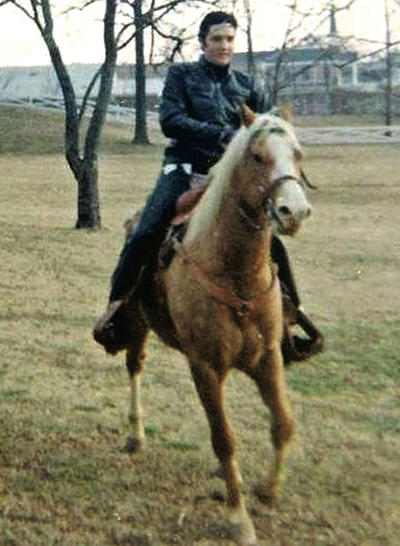
Photo credit: Judy Palmer Bendewald
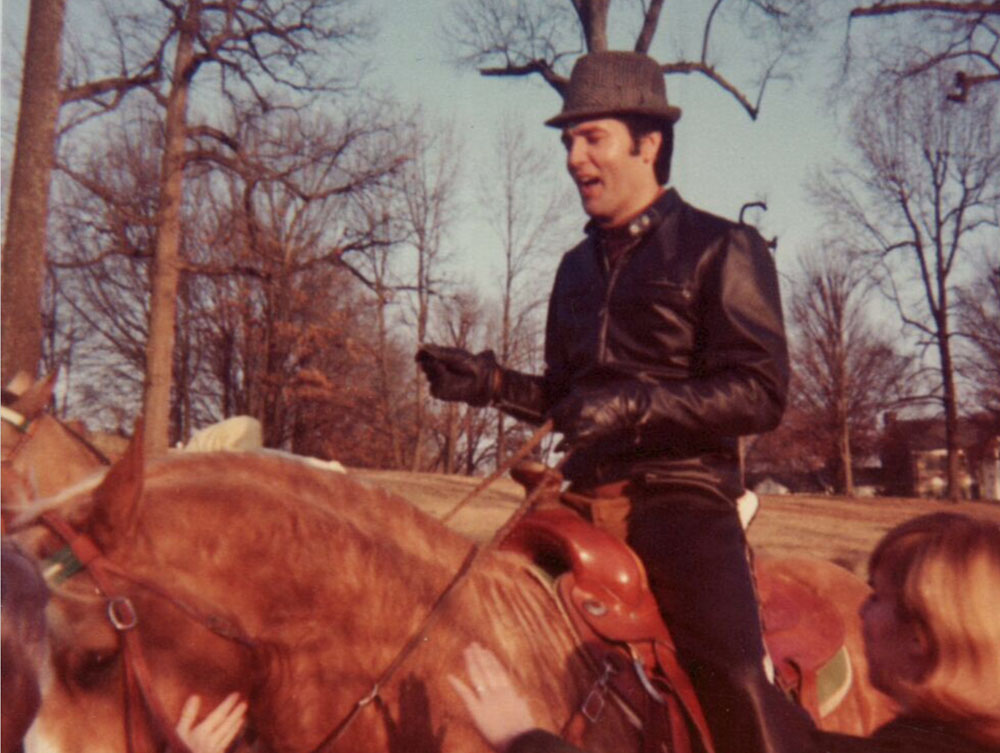
The image of Elvis riding on Bear is a candid photograph taken on January 1, 1968. © Magma Agency / WireImage / Getty Images.
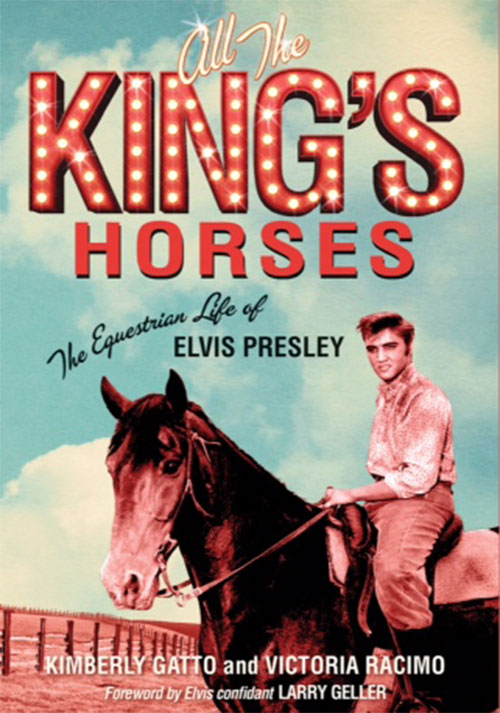
Read more about Elvis in this book:
All The King’s Horses: An Equestrian Life of Elvis Presley
by Victoria Racimo and Kimberly Gatto
Buy Now on Amazon
Hardcover | Kindle | Audiobook.
You can find more interesting stories in our section on Recreation & Lifestyle.
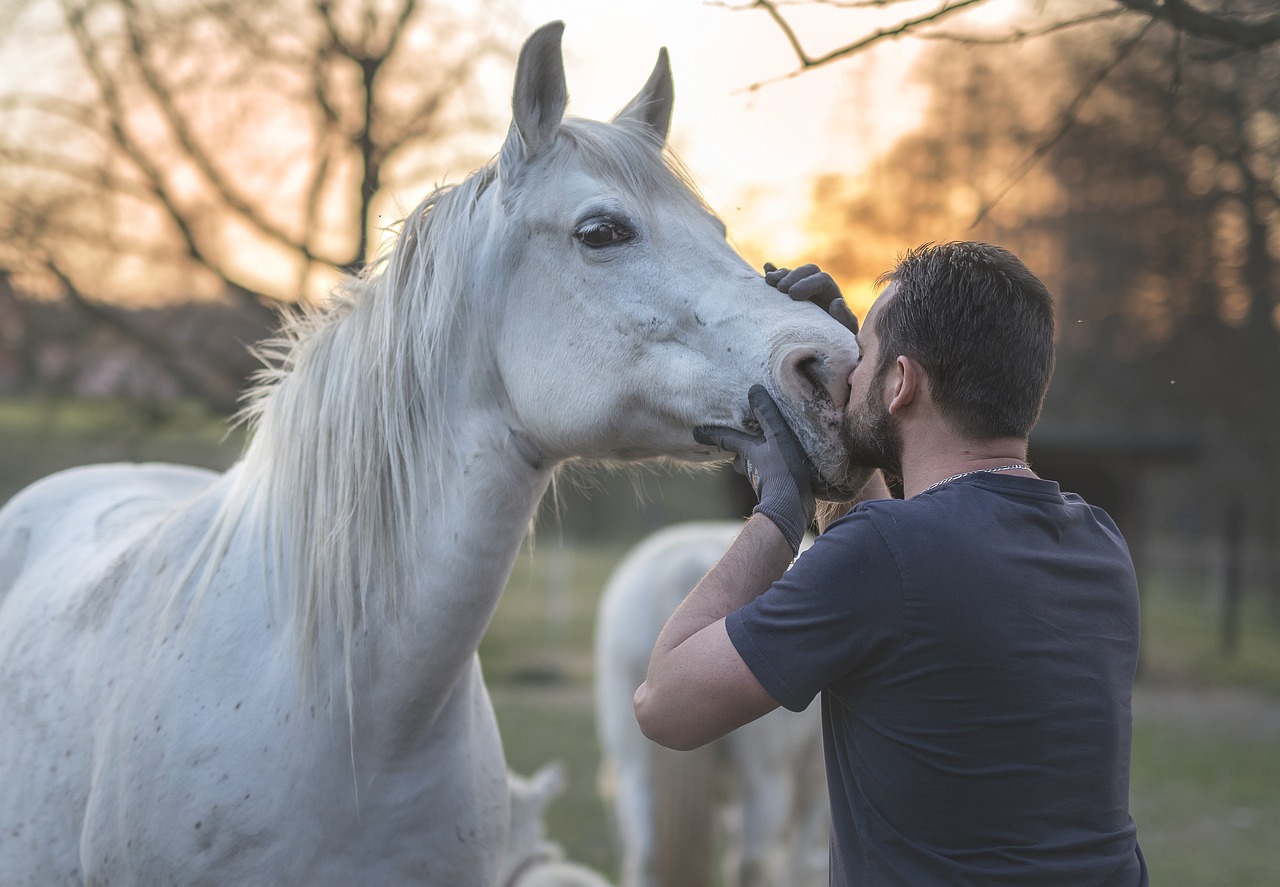
By the EIE Editorial Staff
We love horses and owning a horse can be a very rewarding experience, but it's important to be aware of the challenges involved before you take the plunge. Here are 10 of the biggest challenges you're likely to face.
1. Financial Commitment
Horses are expensive animals to keep. You'll need to factor in the cost of bedding and feed, farrier services, veterinary care, stabling or boarding fees, deworming, vaccinations, and other miscellaneous expenses. You may also choose to insure your horse which is an additional cost.
2.Time Commitment
Horses are social animals that require regular handling and attention. You'll need to spend time each day feeding, watering, cleaning their stall, grooming, and exercising them. Even if you board your horse at a stable, you'll still need to factor in travel time to and from the barn.
3. Finding Suitable Housing
Horses need a safe and secure place to live. You'll either need to have enough property to provide them with pasture and shelter, or you'll need to board them at a stable. Boarding fees can vary depending on the location and amenities offered. Here's a Boarding Checklist to help you in your search.
4. Training
Even if you're buying a well-trained horse, you'll still need to take some time to get to know each other and build a bond. Horses are intelligent creatures that can learn a lot, but they also have their own minds and can be stubborn at times. You may also want to hire a trainer or participate in a clinic.
5. Health Care
Horses are susceptible to a variety of health problems, some of which can be very expensive to treat. It's important to have a good relationship with a veterinarian who specializes in equine care. Equine dentists and therapy also help with maintaining good health for your horse.
6. Commitment for the Long Haul
Horses can live for 20 to 30 years or even longer. When you buy a horse, you're making a long-term commitment to their care. Be sure you're prepared to provide them with a loving home for their entire lifetime. At some point, you may choose a retirement home for them so they will have a peaceful life in their final years if their current living situation is not suitable for their advancing age. And finally, there are difficult decisions to make when your beloved horse crosses the rainbow bridge.
7. Unexpected Costs
Even if you budget carefully, there will always be unexpected costs that come up, such as a sudden illness or injury. It's important to have a financial cushion to cover these costs.
8. Finding a Horse that's Right for You
With so many different breeds and types of horses available for so many riding disciplines, it's important to find one that's a good match for your experience level, riding style, and budget. Do your research and try out a few different horses before you make a decision.
9. Safety
Horses are large, powerful animals, and they can be dangerous if not handled properly. It's important to learn how to handle horses safely on the ground and in the saddle. Always wear a helmet and appropriate safety gear when riding.
10. Finding Support
Owning a horse can be a challenging but rewarding experience. It's important to have a support system in place, such as a trainer, a farrier, a veterinarian, and other horse owners. These people can provide you with guidance, support, and friendship.
Keeping all of these in mind, owning a horse can be an incredibly fulfilling and rewarding relationship for many years, so treasure every moment!
You can find more interesting stories in our section on Recreation & Lifestyle.
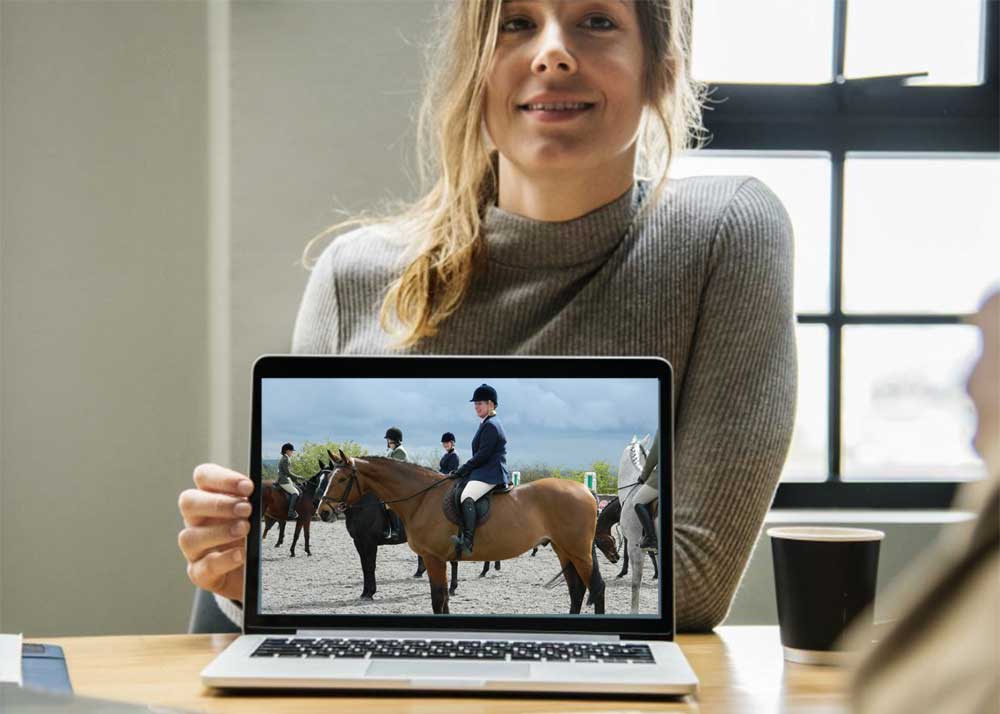
Managing riding lessons, whether you're a novice rider or an experienced equestrian, requires a keen eye for detail and a knack for organization. Gone are the days of juggling paper diaries and scattered emails. The digital era offers tools to streamline this process, transforming how we plan, execute, and reflect on our riding experiences. Keep reading as we delve into the digital revolution, offering insights and tips on harnessing these technologies to keep your riding lessons organized and at your fingertips.
Understanding Your Digital Options
Embarking on the journey to organize riding lessons digitally unveils a panorama of tools ranging from simple mobile applications to comprehensive management software. Each tool is designed to cater to different aspects of equestrian training management, including but not limited to scheduling, progress tracking, and communication between riders and instructors. It is advisable to conduct thorough research into the various options available, focusing on features, user reviews, and compatibility with your devices.
Prioritizing tools that offer synchronization across multiple devices ensures that you can access your schedules and records, whether at home, in the office, or on the move. Starting with a clear understanding of what each tool offers enables you to make informed decisions that align with your organizational needs and riding goals.
The Basics Of Digital Lesson Organization For Novice Riders
Navigating the initial steps of digital organization can be made less daunting by focusing on platforms and apps that prioritize ease of use and essential functionalities. Novice riders will benefit significantly from starting with applications that offer straightforward scheduling and reminder systems. This foundational approach helps track lesson timings, horse assignments, and upcoming equestrian events, ensuring that both rider and horse are well-prepared for their sessions.
To further enrich the learning experience, novices should consider utilizing digital tools for journaling. Recording observations, challenges faced during lessons, and areas for improvement not only aids in tracking progress but also facilitates constructive feedback sessions with instructors. Choosing beginner-friendly platforms that offer step-by-step guidance can transform the daunting task of lesson organization into a manageable and rewarding part of the equestrian journey.
Advanced Digital Strategies For Experienced Equestrians
For the equestrian who has surmounted the basics and is looking to refine their craft, selecting digital tools that provide an array of advanced features is key. This entails embracing software beyond simple scheduling, incorporating detailed analytics on performance, comprehensive health and wellness records for the horse, and strategic planning features for competitions. Such platforms are invaluable in identifying training patterns, pinpointing improvement areas, and setting precise, achievable goals.
Experienced riders should seek digital solutions that allow for customization, enabling them to tailor the software to their specific training regimens and objectives. Engaging with tools that offer in-depth analytics can also facilitate a deeper understanding of the horse's performance and health trends, which is critical for making informed decisions regarding training intensity and focus. Integrating these advanced digital strategies into daily training routines can significantly enhance the rider's and the horse's readiness for competitive events, fostering an informed and strategic competitive edge.
Keeping Your Documents In Check: The Role Of PDFs
A crucial aspect of organizing your riding lessons digitally revolves around managing important documents such as registration forms, lesson plans, and feedback sheets. PDFs emerge as the go-to format for these documents, thanks to their wide accessibility across various devices and ability to maintain formatting integrity. To streamline document management, employing cloud storage solutions allows for efficient categorization of PDF files, facilitating easy retrieval by date or document type.
Moreover, PDF compression tools have become indispensable when dealing with large documents. Compressing PDFs ensures that large files are reduced to more manageable sizes without compromising quality, making them quicker to upload, download, and share. Tools like PDF compressors are essential for equestrians who need to swiftly share detailed lesson plans or feedback sheets with instructors or fellow riders. This approach ensures that all parties have timely access to important information and significantly reduces the time spent managing paperwork.
Engaging With Your Equestrian Community Online
The digital realm offers more than just organizational tools; it also connects you with a global community of equestrian enthusiasts. Engaging with this community through forums, social media groups, or online events can significantly enhance your riding experience.
Sharing your progress, challenges, and tips contributes to your growth and supports others on their equestrian journey. This digital camaraderie can be especially motivating, offering new perspectives and encouragement when you face obstacles in your riding.
Tips For Choosing The Right Digital Tools
Selecting the right digital tools for organizing your riding lessons is about balancing functionality and usability. Consider what aspects of your equestrian life you need help organizing—scheduling, document management, community engagement, or performance tracking. Tools that offer a clean, intuitive interface are often the best place to start, as they require less time to learn and integrate into your routine.
Moreover, many apps and platforms offer free trials, allowing you to explore their features before committing. Finding tools that align with your needs will pay dividends in the long run, making your riding lesson organization seamless and effective.
Implementing Digital Organization In Your Riding Routine
The leap from understanding the benefits of digital tools to integrating them into your daily riding routine can seem daunting. Yet, with a systematic approach, it becomes manageable and even enjoyable. Begin by selecting one aspect of your riding life you wish to digitize first, such as scheduling your lessons. Once comfortable with this, gradually introduce additional tools for other aspects, like performance tracking or document management.
Customizing your digital toolkit to suit your unique needs ensures it remains relevant and valuable. Remember, the goal is to enhance your riding experience, not to overwhelm yourself with technology. Regularly reassessing the tools you use and how they fit into your routine is essential for staying on track and maximizing the digital advantages.
The journey to digitally organize your riding lessons offers a blend of challenges and rewards. By carefully selecting and implementing the right digital tools, riders at all levels can achieve a new level of efficiency and effectiveness in their equestrian pursuits. Whether you're a novice rider just starting or an experienced equestrian looking for advanced strategies, the digital world has something to offer. Embrace the change, and you'll find that staying organized enhances your riding and enriches your overall equestrian experience.
You can find more intriguing articles in our section on Recreation & Lifestyle.
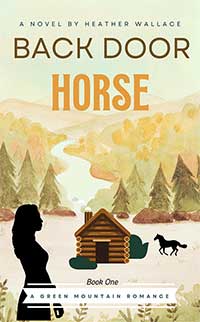
Back Door Horse (Excerpt) from Book One of the Green Mountain Romance Series By Heather Wallace
Imogen was having a wonderful but strange dream. She’d always had vivid images that she remembered snippets of the next morning upon waking, then faded slowly. This time her imagination created a big, lumberjack of a man barreling into her home. She didn’t know why he was there, but he was ruggedly handsome with dark hair pulled underneath a trucker cap, piercing blue eyes filled with concern, and wow, quite a muscular chest heaving with exertion. She felt like the heroine of a romance novel.
“Ow,” Imogen moaned and clutched her head. It felt like a bomb exploded behind her right eye as her gaze focused, immediately regretting the light streaming in from the door. While it was weak, it was still enough to make her eyes water so she closed them again. Wait a minute, she didn’t think dreams usually involved discomfort.
A discreet cough made her whip her head to the doorway. A sharp, stabbing pain traveled up her neck, and she cried out at the surprise of it.
Where the hell was she?
She struggled to open her eyes again and when the room swam, she leaned over to vomit, narrowly missing a pair of scuffed boots. Oh god, she felt terrible.
Now she knew she couldn’t be dreaming. This was a nightmare.
A cold nose rubbed against her hand, and she focused on her pup, refusing to be embarrassed that she had just vomited all over her aunt’s rug and a strange man. Serves him right for coming in, uninvited. Who the heck was he anyway?
A glass of water underneath her nose had her looking up into bright, blue eyes. She should have been scared – she was alone and obviously indisposed with a stranger – but the concern in his face was obvious.
With a sigh, she straightened up off the couch. “Not a dream then,” she muttered under her breath. Then she addressed her companion. “Great guard dog you are, you traitor.” Cookie wagged her tail on the ground and opened her square jaw in a Staffy smile.
Imogen refused to be charmed. She turned her attention to the stranger in the room.
“I really hope you aren’t a pervert because I am definitely not in the mood.”
Gabriel burst out laughing, shocked. He took the situation in and decided to be blunt with the sassy woman. “You’ve been in an accident. You found your way to your aunt’s house, but I’m pretty sure you have a concussion.”
“That makes sense, I guess. Now, who the hell are you?”
“Not a pervert, although under better circumstances I could be convinced.”
She blinked at the sudden wattage of his smile. Whoa, he was handsome. No, Imogen, she thought to herself, you will not be charmed by a stranger in a remote mountain cabin. Life is more Dateline than Hallmark movie.
“I’m Gabe, the neighbor. Your aunt told me to keep an eye out for your arrival. I didn’t expect it to be with such drama though. Did you know your car is in a ditch about a mile down the road?”
“Anything worth doing is worth doing big.” Imogen muttered under her breath.
He seemed to have bat ears because he laughed again and responded, “You certainly did at that. You must be her niece.” Closing her eyes again, she leaned back. Any friend of Aunt Josephine’s certainly couldn’t be that dangerous. Cookie loved everyone so she wasn’t a good judge. “Yeah, I’m Imogen.” She pointed blindly at the dog, whose tail she could hear whipping the floor in excitement. “That’s Cookie Monster. But apparently you are friends already.”
Ignoring the sarcasm, Gabe knelt and gave Cookie a head rub and scratched under her big, block head. Her jaw opened wide, and she gave him a proper kiss on the mouth in appreciation.
“Who’s a good girl guarding Mommy?”
Imogen grimaced. Baby talk. Really? It should be annoying but damn if it wasn’t adorable. She was guilty of the same. Good looking and a big softie. Ugh, just her luck swearing off men for the foreseeable future.
He walked into the house, straight back to the kitchen, and opened the freezer.
She sighed. Apparently, he was familiar with her aunt’s home. Good for Aunt Josephine pulling this one. Here she thought she was a lonely old mountain woman, but instead she was playing kissy face and acting like a cougar.
He cleared his throat again, surprising her at his proximity. When did he come back into the room? Maybe he was the cougar; he was damn quiet on his feet. She peeked her left eye open in response. It was all she had to give at this moment.
Gabe handed her a bag of peas and a few Ibuprofens. “For your head. We should probably get you to the hospital and have that checked out. What the hell happened anyway?”
Taking the preferred offering, she swallowed the pills dry, and one got stuck in her throat. She sat up quickly, hacking and gagging. She grabbed the glass of water that appeared in front of her and took a sip, finally catching her breath.
Gabe sat on the coffee table in front of her, petting her dog and looking genuinely concerned.
Read more: Back Door Horse - An Excerpt from the Book by Heather Wallace
- "Horse Girl, A Journey Home" an Excerpt from the Book
- The Cowboy and the Queen - Monty Roberts Documentary
- Why is Playing Polo So Much Fun?
- Not-So-Coy Fish Boot - A Rocketbuster Catch
- Welcome to the Kentucky Horse Park!
- Are Equestrian Sports LGBTQ+ Friendly?
- Hot Blood, Cold Blood, Warm Blood – What Does it Mean and Which is Right for You?
- Can Horses Help Us Cope with the Holidays?
- Can Horses Bring Your Joy in 2024? You Bet they Can and Here's How!
- Say Aloha to a Horse Vacation in Hawaii!




